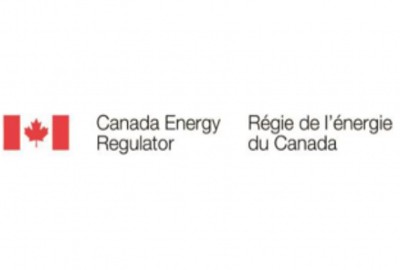
A new floating solar array is making waves in Utah, where clean energy advocates appear to be making some headway in their fight to pump up the state’s renewable energy profile. If all goes according to plan, the new project could inspire similar projects and help push coal power farther into the dustbin of history, while also conserving water resources.
Floating Solar Is Having A Moment
The idea of making solar panels float on a body of water may sound simple enough, but the devil is in the details. Corrosion is one issue. Access for maintenance and repair, variations in the level of the water, and icing can also complicate matters (see more CleanTechnica coverage here).
Nevertheless, floating solar has attracted the eye of the Energy Department. In 2018, the agency’s National Renewable Energy Laboratory took stock of the potential for floating solar to account for a significant portion of US electricity generation.
The potential is huge. Researchers at the University of Michigan, for example, recently catalogued almost 480,000 lakes, ponds and reservoirs in the contiguous US.
The NREL team selected only reservoirs and other human-built water infrastructure for assessment in their study. They also made further cuts based on local economic and technological considerations.
After all that winnowing the NREL team identified more than 24,000 suitable sites. If all those sites were developed for floating solar, they could account for about 10% of US electricity generation according to NREL’s calculations.
To Utah And Beyond
Floating solar has taken off like a rocket in other parts of the world. Here in the US, not so much. New Jersey is one bright spot, with one solar array on a drinking water reservoir developed by the global floating solar specialist Ciel & Terre. Another is located on a retention pond at a wastewater treatment plant.
The connection to water supply infrastructure is coming into sharper focus as researchers assemble evidence that floating solar arrays conserve water by reducing evaporation. That’s an important consideration for US states with stressed water resources, including Utah.
Last year, Utah Governor Spencer Cox issued a public statement recapping his administration’s new and ongoing efforts to conserve water during a history-making drought. Renewable energy did not get a mention, but the Governor did highlight the importance of water storage, including aquifers as well as above-ground reservoirs.
Perhaps the new floating solar project will help him make the connection.
The project will be located on a retention pond at the Signal Hill Water treatment plant, which is operated by the Mountain Regional Water Special Service District. Mountain Regional manages the drinking water system for the picturesque Snyderville Basin community near Park City, in Summit County.
The utility Rocky Mountain Power provided a grant of $400,000 to fund the project, and that’s where things get interesting.
Rocky Mountain’s service territory sprawls beyond Utah to include Idaho and Wyoming for a total of 1.2 million customers. If all goes according to plan at Snyderville Basin, the new floating solar array could become a model for replication throughout the tri-state area.
That could provide an extra shot of adrenaline for Rocky Mountain’s new decarbonization plan, which calls for shutting down all utility-scale coal power plants in the state by 2032. The plan is part of a broader decarbonization push by its parent company, PacifiCorp.
“First and foremost, we’re going to see unprecedented growth at a faster pace to ramp out procurement of renewables and storage, ” Rick Link, PacifiCorp’s senior vice president for resource planning procurement and optimization,” told the Tribune. Link also credited the 2022 Inflation Reduction Act for accelerating PacifiCorp’s decarbonization journey.
Nukes Vs. Floating Solar
The Tribune noted that nuclear power is a key part of the plan, though that remains to be seen. A 500-megawatt plant in Kemmerer, Wyoming, is anticipated to start operating in 2029, with the zero emission kilowatts slated for Utah. No word yet on what the residents of Wyoming think about that. Ground has yet to be broken on the project and recent experience suggests that the 2029 goal is more aspirational than realistic.
Meanwhile, a new nuclear power plant in Wyoming will not help restore Utah’s sagging water resources. Back in 2016, Yale 360 advocated for installing floating solar panels on two major Colorado River reservoirs, Lake Mead in Arizona, and Lake Powell, which stretches between Utah and Arizona.
“Lake Powell loses about 860,000 acre-feet [of water] annually to evaporation and bank seepage,” Yale 360 observed, noting that floating solar panels “can reduce evaporation in dry climates by as much as 90 percent.”
As projected by Yale 360, floating solar arrays covering just 6% of Lake Mead alone would produce 3,400 megawatts or more, far surpassing the output of the proposed Kemmerer nuclear plant.

One Small Step For Floating Solar, And For Satan
In another sign that the Signal Hill project could motivate similar projects elsewhere, Mountain Regional has tapped the leading energy services firm Ameresco to construct the array. If that name rings a bell, it should. Ameresco has been working on an energy makeover for the US Department of Defense, including a new floating solar project at Fort Bragg in North Carolina.
As described by Ameresco, the Signal Hill array will be a 589.7-kilowatt, DC capacity system, which will supply electricity directly to the treatment plant and shunt the excess to the grid. Overall, Ameresco expects the array to produce 887,712 kilowatt-hours annually when it comes online in September next year.
Ameresco estimates that the floating solar array will cut 384 metric tons of carbon dioxide emissions, “which is equivalent to saving 43,211 gallons of gasoline per year or preventing the burning of 430,160 pounds of coal.” That comes out to about 215 tons of coal, which is practically nothing compared to the millions of tons still burned in Utah each year. Still, it’s a piece of a bigger puzzle.
Coal still accounted for 53% of electricity generation in Utah as of last year. The state has a long way to go on decarbonization, but the economic benefits of floating solar could sweeten the pot.
Ameresco calculates that the new array will offset 92% of Signal Hill’s current grid usage, reducing energy costs for Mountain Regional by 80%.
The bottom line benefits to the water supply district and its customer are of particular interest, considering that Governor Cox and other top Republican officials in Utah have been ratcheting up the rhetoric in their crusade against ESG (environment, social, governance) investing.
Last spring, for example, the Salt Lake Tribune reported that Utah State Treasurer Marlo Oakes called ESG investing part of “Satan’s plan” at the Salt Lake County Republican Convention.
If you have any thoughts about that, drop us a note in the comment thread.
Follow me tinamcasey on Bluesky, Threads, Post, LinkedIn, and Spoutible.
Image credit: “Rendering represents Mountain Regional Water’s floating solar array project with Ameresco that is designed to power a water treatment facility in Park City, Utah with locally generated renewable energy” (courtesy of Ameresco via Businesswire)
I don’t like paywalls. You don’t like paywalls. Who likes paywalls? Here at CleanTechnica, we implemented a limited paywall for a while, but it always felt wrong — and it was always tough to decide what we should put behind there. In theory, your most exclusive and best content goes behind a paywall. But then fewer people read it! We just don’t like paywalls, and so we’ve decided to ditch ours. Unfortunately, the media business is still a tough, cut-throat business with tiny margins. It’s a never-ending Olympic challenge to stay above water or even perhaps — gasp — grow. So …




